Take out your kimono and put on your wooden sandals (geta), because we will spend a year browsing a prestigious market in Japan during the Edo period. During that year, we will meet artisans and traders, fight a trio of fires and try to garner the most prestige (Iki). Does the game Iki deserve an award for best market game or is it much Edo about nothing?
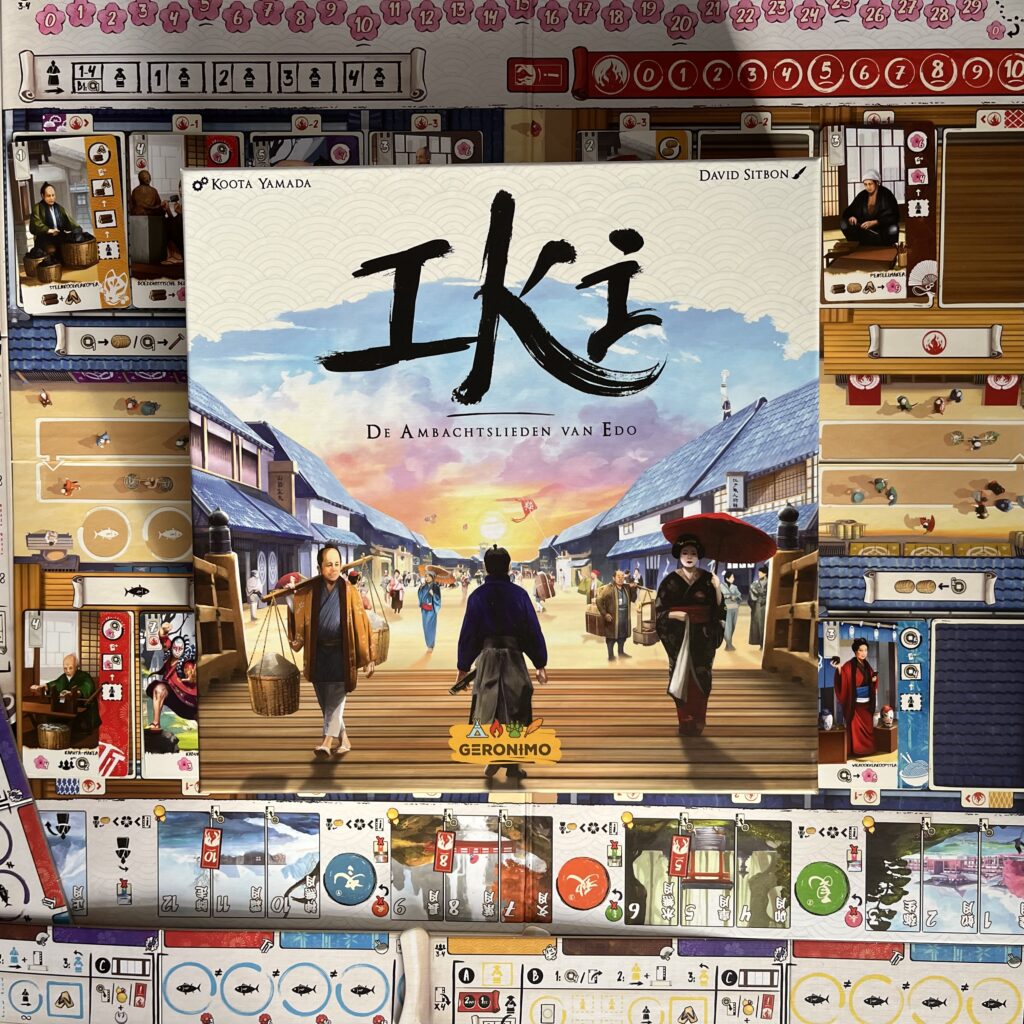
Background and theme
The Edo period (also called Tokugawa period, named after the ruling shogunate) is a period of Japanese history that can be placed somewhere between 1603 and 1867. The Edo period is quite possibly the most distinctive period of Japanese history and, in any case, one that had a major impact on Japanese culture and art. During this period, Japan was under the rule of the Tokugawa shogunate and the country’s 300 regional Daimyo. A shogun was a Japanese commander-in-chief, a shogunate a dynasty of such Shoguns and a Daimyo a Samurai who owned a (land) area under the Japanese feudal system and ruled under the Shogun’s rule. A Daimyo (or Samurai) can therefore also be compared to a European knight or lord. But enough about the Japanese feudal system, time to play the game!
Oh no wait, just a little bit more background! The Edo period is named after Edo, which we now know better as Tokyo (the “capital of the east”). Edo, formerly a modest fishing village, was in fact where the Tokugawa shogunate was officially established on 24 March 1603. Previously, Japan’s main seat of government was in Kyoto. Preceding the Edo period was the Sengoku period and, after a power vacuum that initiated this period, this period was mainly dominated by the many civil wars where various samurai tried to usurp power over Japanese territories. The Sengoku period came to an end with the reunification of Japan by, among others, the Daimyo Oda Nobunaga who you may know from Tecmo-Koei’s Samurai/Orochi/Dynasty Warrior games. Nobunaga lost his life due to seppuku (a Japanese form of suicide after losing one’s honour) as a result of an ambush. Nobunaga was succeeded by Tokugawa Ieyasu, among others, and with him began the Tokugawa shogunate and also the Edo period. This period came to an end with the Meiji Restoration and the Boshin War, which restored the imperial rule in Japan.
After the chaos of the preceding Sengoku period that was filled with civil wars, plots and assassinations, the Edo period was in contrast known for its economic growth, strict social order, isolationist foreign policy, stable population, perpetual peace and mainstream enjoyment of art and culture. The Edo period may be the period that has been most characteristic of Japanese history and at least Japanese culture precisely because of this. The Edo period was the era of further rise and resistance to Christianity in Japan, trade that was limited to mostly China and Dutch sailors and, of course, the Ukiyo-e block printing art of Hiroshige and Hokusai. You may know the latter painter from the famous work The Great Wave off Kanagawa (Kanagawa-oki nami-ura) and the beautiful yet slightly repulsive Dream of the Fisherman’s Wife (Tako to Ama) a precursor to certain forms of erotic works. Besides painting, the Edo period was also known for other crafts and handicrafts for which Japan is still world-famous and proud. Without the Edo period, we would not have Kabuki theatre and famous Japanese food stalls that elevated food such as Soba and tempura to become an art form. During the Edo period, ‘Iki’ was an aesthetic pursuit or display of class, style and/or wealth: the ideal way of life in Edo. This aesthetic concept is also central to the eponymous game Iki.
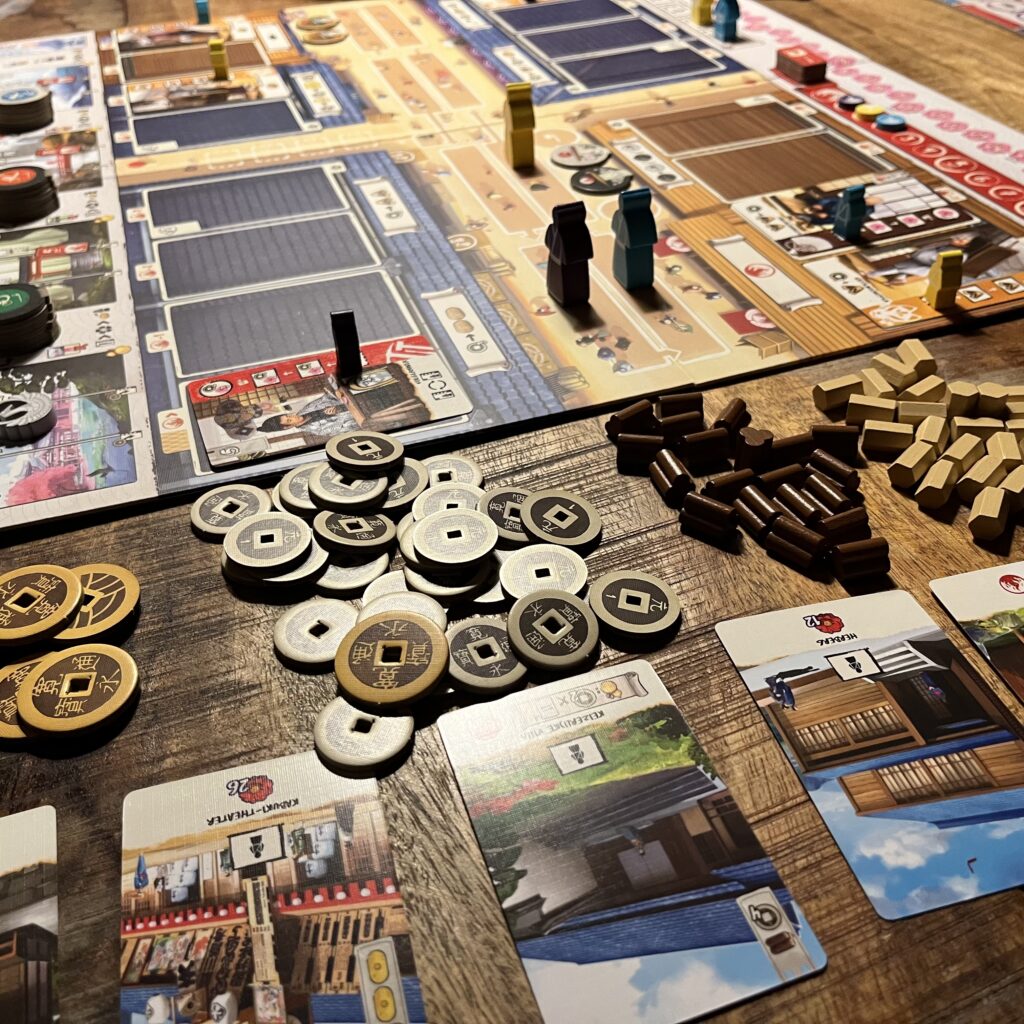
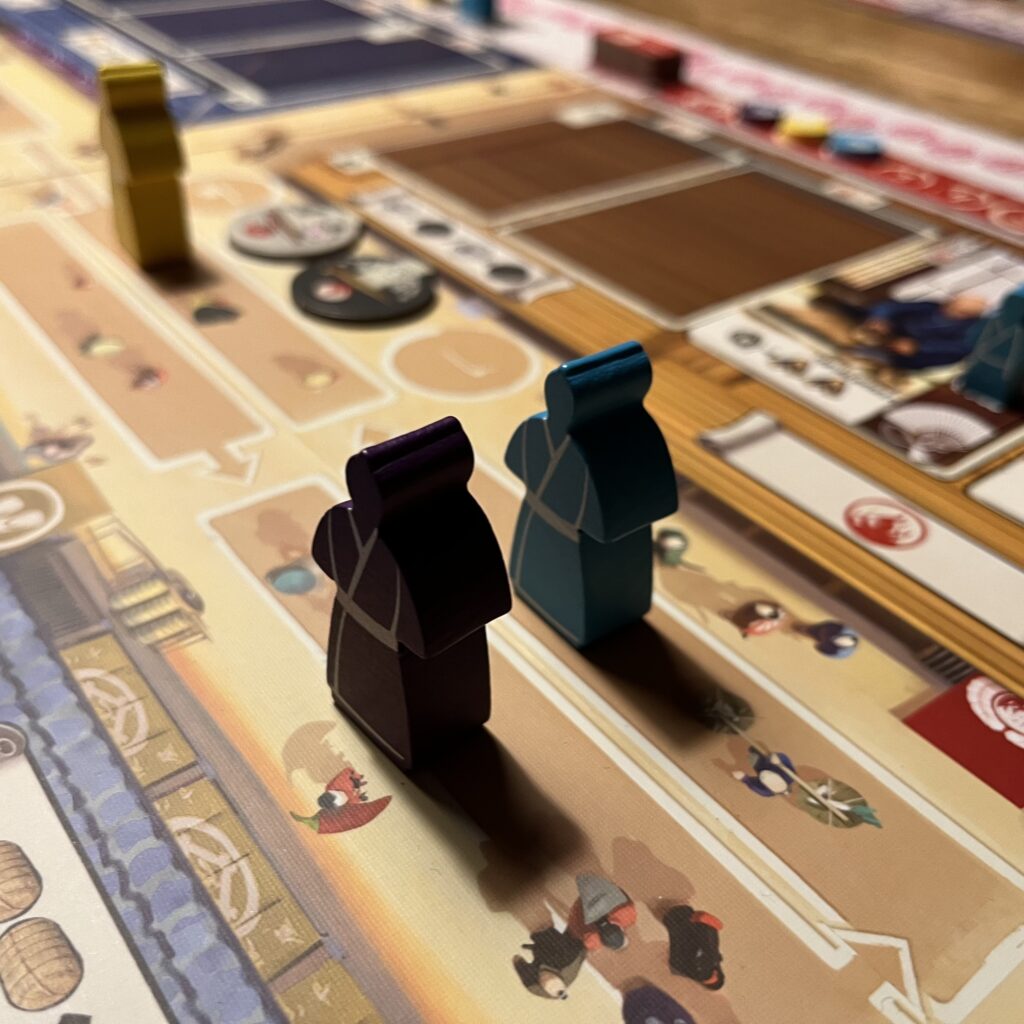
The characteristics of Iki and the Edo period are overtly reflected in this board game and the theme is very present in the various, components, elements and gameplay. In Iki, players assume the role of an Oyakata (a lord/master with great standing) who hires craftsmen, builds buildings and trades to gain great prestige (Iki). The game plays or in the markets of Edo (modern-day Tokyo) over 13 rounds in four seasons and 12 months and the celebration of the New Year. The goal of this game is to become the annual Edoite with the most Iki.
Setup
The central game board is placed in the centre of the table. This board depicts various stalls, the calendar and special events, the fire track, the player order and the score track. There is a special side for two players on which fewer stalls are depicted. Next to the board above the calendar, the different character cards of the different seasons are placed. Also, the tokens of different seasons are placed on the corresponding spots on the calendar. On the game board, players already place the corresponding tokens (pipes, tobacco and fish) for spring. The various components and building cards are placed within easy reach of all players, and each player is given a player board where they place their various meeples and where there is also a visual summary of the game progress and scoring that players can easily consult during the game. Quite useful! Players get some coins and rice in advance. Also very useful!
A starting player is chosen and this player’s fire token is placed at the top of the first position on the fire track. In reverse order, players choose a starting character to place in one of the stalls in the far corners of the market. On this card, players place one of their Kobun-meeples (a type of villager) to indicate that this card belongs to this player. Players are ready to play for a year (or rather two hours).
Gameplay
Starting with the player furthest (and in case of a tie, at the top) on the fire track, players place their Ikizama (way of life) meeple on the Ikizama track (the player order). The Ikizama track reflects not only the players’ turn order during a month, but also the amount of steps their Oyakata meeple will move (at the minimum) across the market during the round.
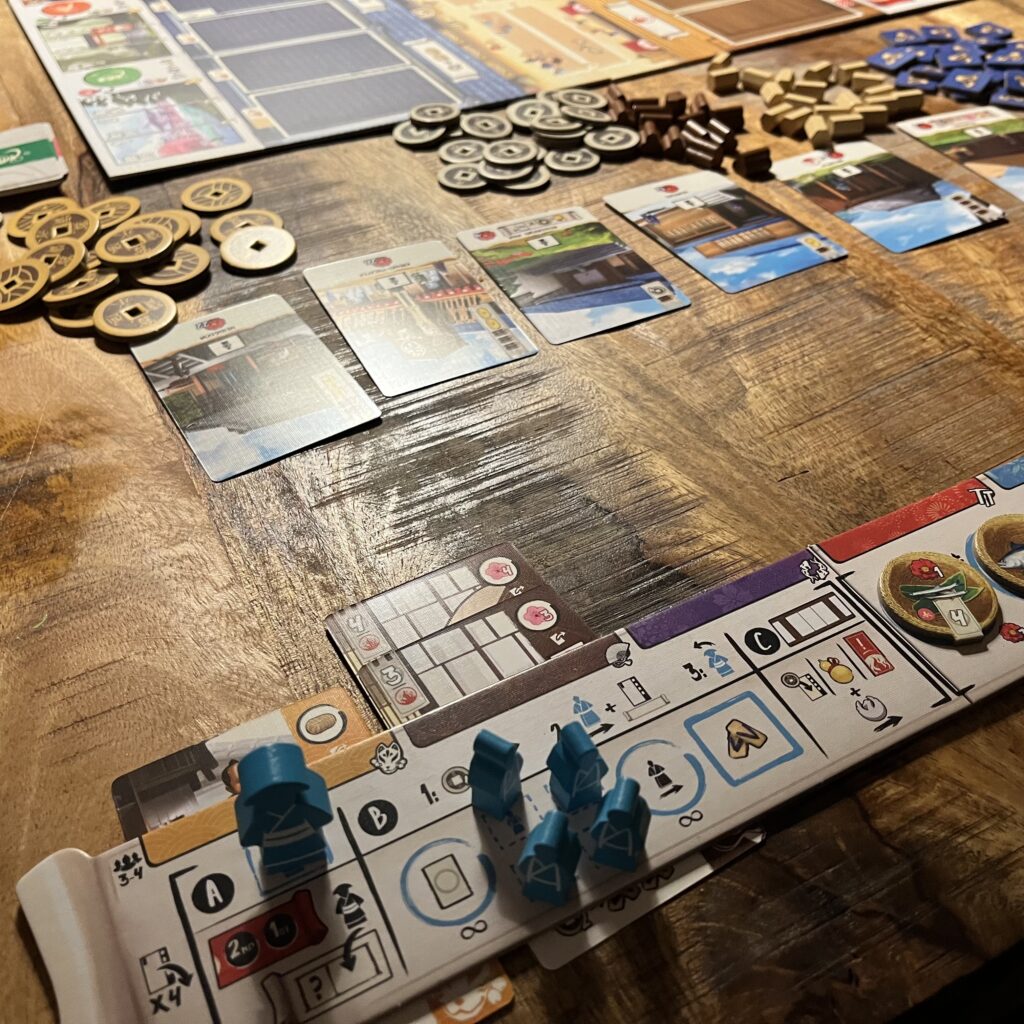
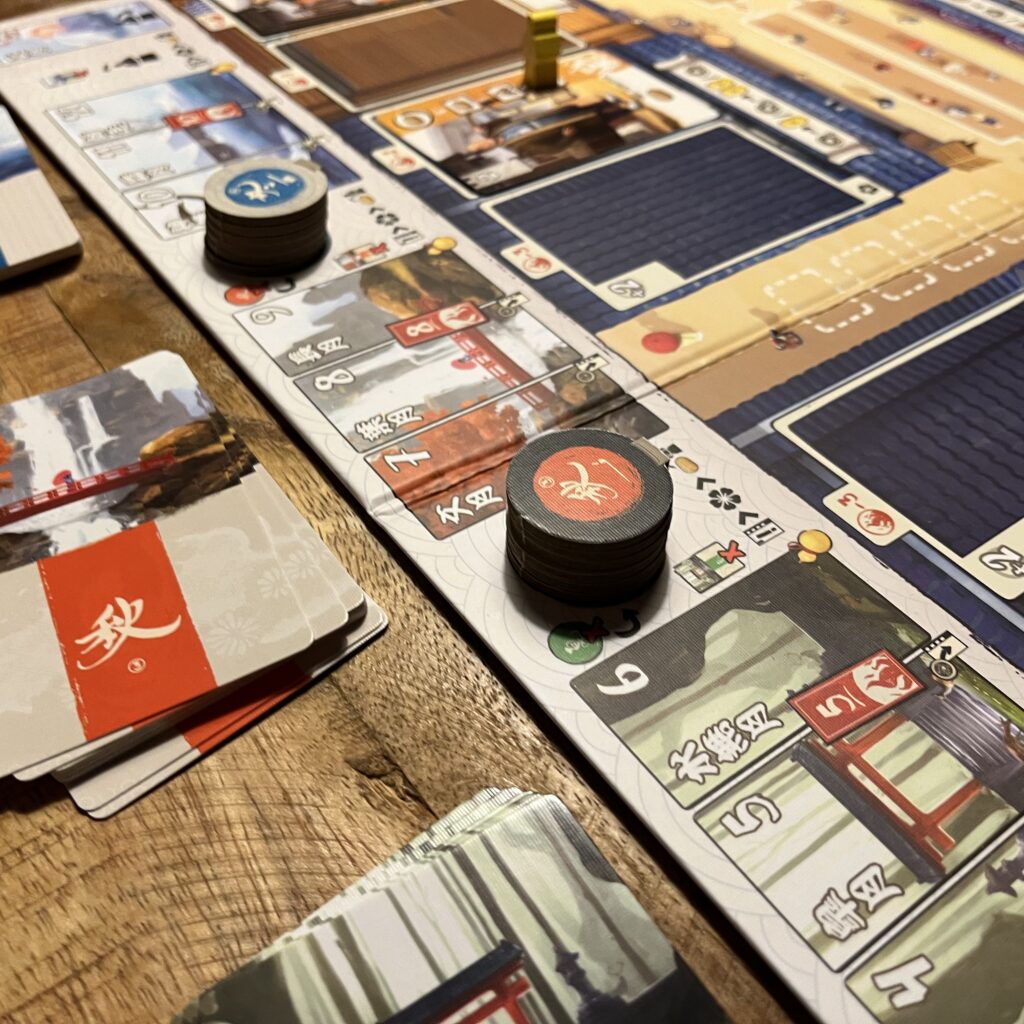
Starting with the first player on the Ikizama track, this player chooses whether to receive money or hire a character. During a season, different characters (craftsmen, artisans, actors, artists, etc.) are placed open next to the board. A player often has to pay to hire a character, but some less sought-after characters can be ‘purchased’ at a discount. A recruited character is placed on a free stall in the market and players place their Kobun-meeple on the card to indicate that this character belongs to this player. The character cards indicate what salary this character earns at the end of a season, what kind of action this character earns while visiting his stall and how much experience this character needs to gain before this character can retire. Gaining experience and retiring is an important element of Iki. For instance, a character’s salary depends on experience, and retired characters no longer cost rice to keep alive, but still provide some sort of state pension. Every time your Oyakata has made a round of the market, your hired characters gain experience. Once a character retires, you also get back your Kobun-meeple (you only have 4 of these) in order to hire other characters.
After cashing in or recruiting a character, you move your Oyakata around the market. By using sandals, you get to take extra steps. So you can choose to race around the board to gain experience or visit certain stalls and characters on a calculated basis. Each stall has a standard action (for example, move your fire token on the fire track, buy fish, tobacco or pipes or buy or trade resources and even build buildings for ongoing bonuses during the game), but stalls can also have characters on them for extra actions. If you use another player’s character, it provides experience for that player. This gives you an interesting dilemma: trade with a good character while supporting my opponent or still choose not to use this character.
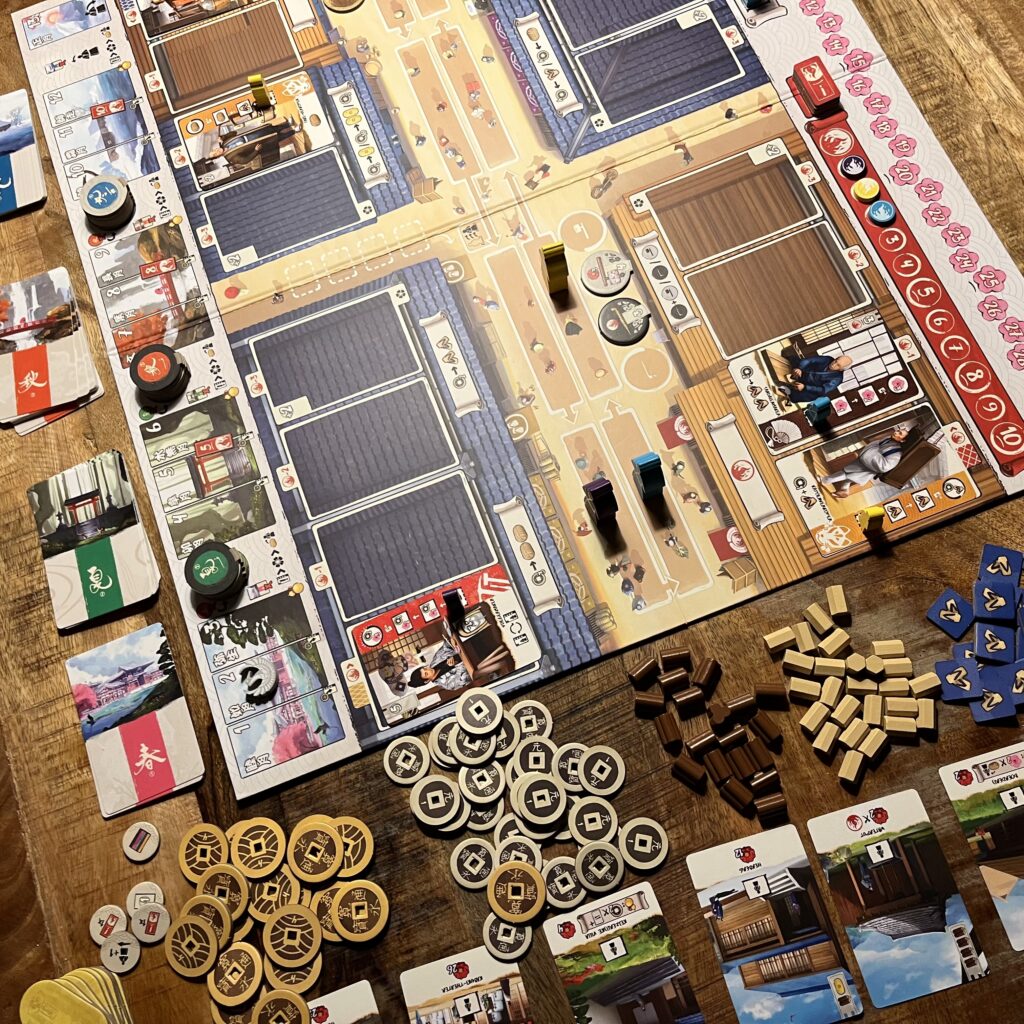
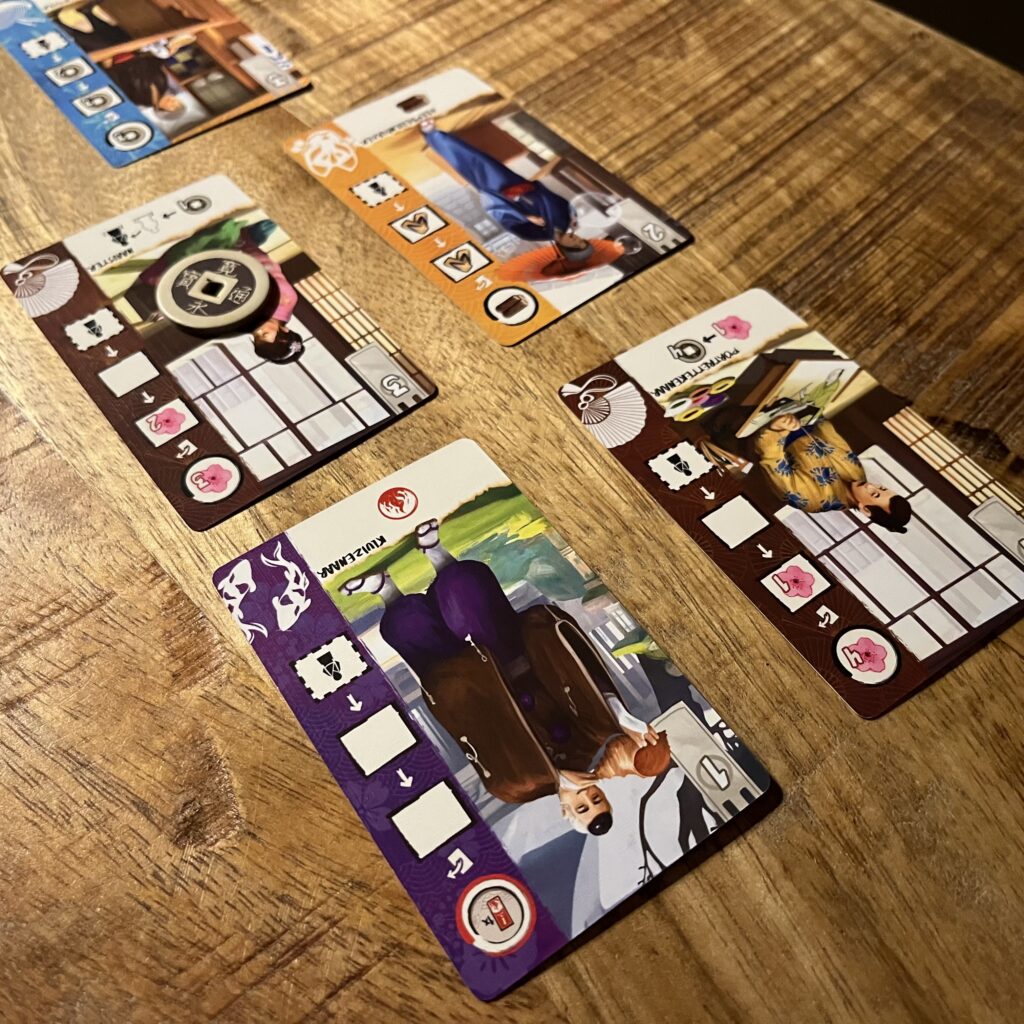
After you perform your turn, you take your Ikizama-meeple back into your supply and once all Ikizama-meeples are home, a new month begins. After some months, fires occur and possibly buildings burn down or characters die if the relevant players have not advanced enough on the fire track (which also indicates the strength of their firefighting force). At the end of each season, characters (including pensioners) are paid salaries, certain stalls provide harmony bonuses and players must be able to use enough rice to feed their characters and avoid starvation. This continues for 12 months, and during the 13th round, players have another opportunity to trade with 1 stall. The player with the most Ik… wins Iki!
Conclusion
As I wrote earlier, Iki is soaked with theme. The various craftsmen are an important part of the game and each card is a reference to something from the Edo period, and each game element is deliberately chosen, including the various coins and merchandise. The different actions therefore feel logical as well as thematic. After all, each of the artisans of Edo used their own craft to support the lives of the townsfolk (the players in the role of an Oyakata), by hiring different characters you not only provide more actions on the game board, but also build up a system and hopefully prestige. In this game, there are not only craftsmen, but also street vendors, shopkeepers and other professions that are and were unique and very characteristic of this period, allowing you to really immerse yourself in d Japan during the Edo period. Imagine yourself among the actors of the Kabuki theatre, for example, or get fitted with a kimono or handmade umbrella.
Not only does Iki ooze theme, but the game is also immersed in choices, possibilities and dilemmas that make for a dynamic gaming experience. Players must plan well to get the turn order to their liking, the amount of steps their Oyakata takes and the characters they hire and how they string together certain actions and bonuses. Incidentally, the influence on turn order is hugely important (perhaps even a little too important at times) because if you act later, there are fewer options. Everything is well balanced, by the way, because taking more steps means that your turn will come later and other players may steal interesting characters from you. In addition, the game is pleasantly interactive by deploying characters’ actions and gaining experience when you use opponent’s characters. A dynamic and thematic that’s excellent! Yoooo!




